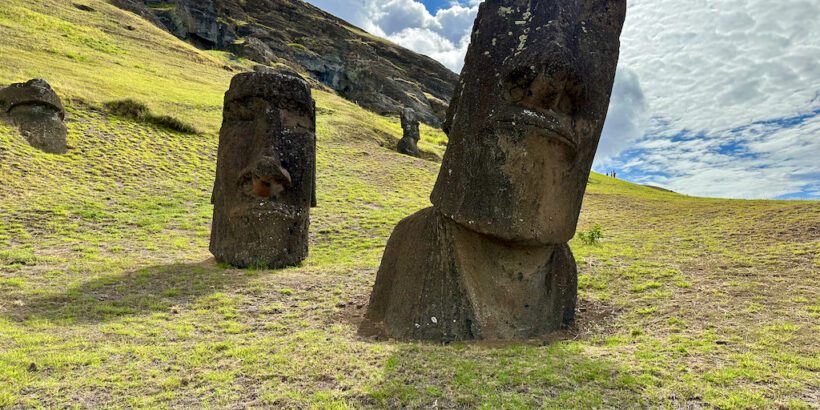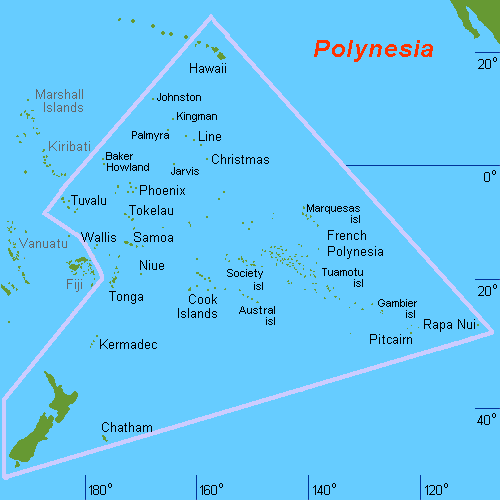Easter Island is a place full of mystery and wonder.
It’s largely all about the unknown there but there are also a lot of interesting facts we do know about this place. Below are some facts about Easter Island that will surely amaze you.
Table of Contents
There are about 1,000 statues on the island
The Easter Island statues, known as “moai,” are located all around the island and there are lots of them.
In fact, it’s estimated that there are approximately 1,000 moai on the island with new statues still being discovered today.
You’ll find lots of the statues along the coast in various stages of preservation. Some will be standing tall fully restored while others will be lying face down broken up into pieces.
Some are even buried up to their chests with only the (very large) head portion sticking out of the ground!
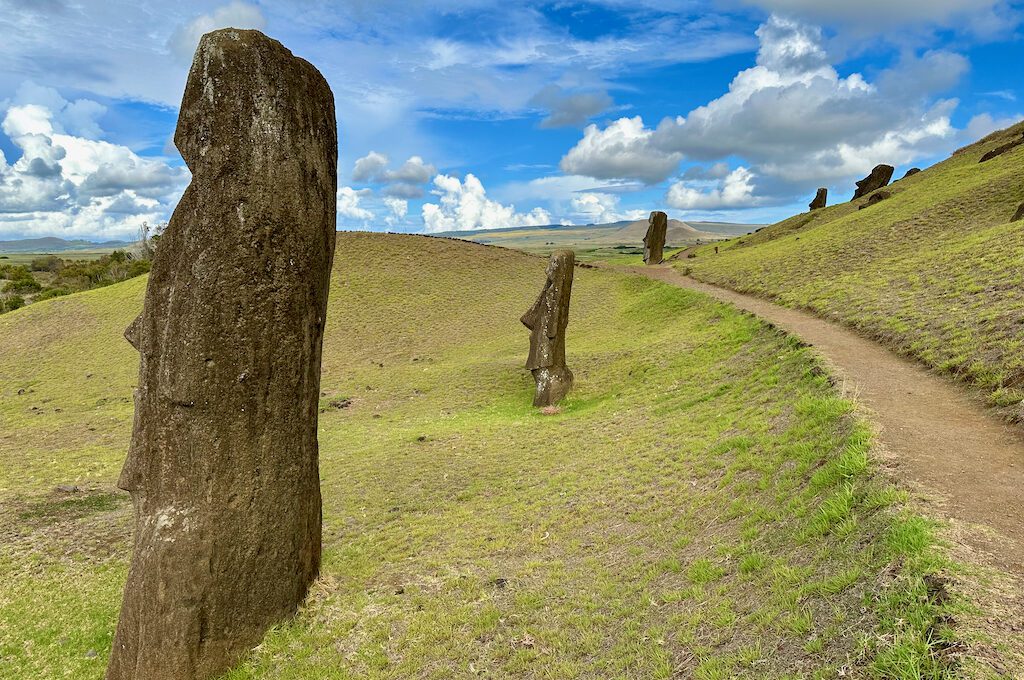
The statues are bigger than you think
The Easter Island moai are probably bigger than you think.
The average height is roughly 13 feet but some are much larger.
Paro Moai — the largest moai ever successfully raised at an ahu — stood an astonishing 10 meters in height with its ears alone measuring 2 m! They estimate that this thing must weigh 80 tons or more.
Also, in the quarry, there was one moai being built that would’ve stood close to 70 feet tall!
When you consider how far they transported the statues across the island and how large and heavy they were, you truly start to appreciate the ingenuity of the Rapa Nui people.
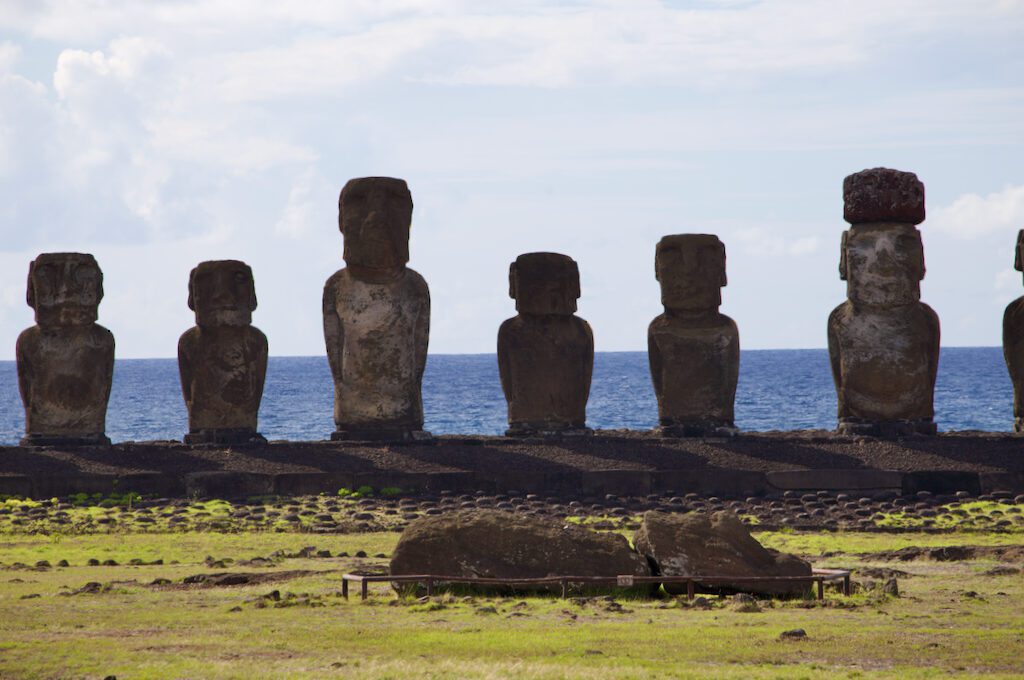
The statues would come “alive” with white eyes
After a statue would make its way to its final destination near the coast it would often receive the final touch which included white coral eyes being placed in the eye sockets of the statue, creating ‘ariŋa ora or “living face
.”
These white eyes gave the moai a completely different look and perhaps represented the ancestors coming back to life in a way that allowed them to watch over the local tribes with supernatural powers.
You can find some of the original coral used for the eyes at the Rapa Nui Museum.
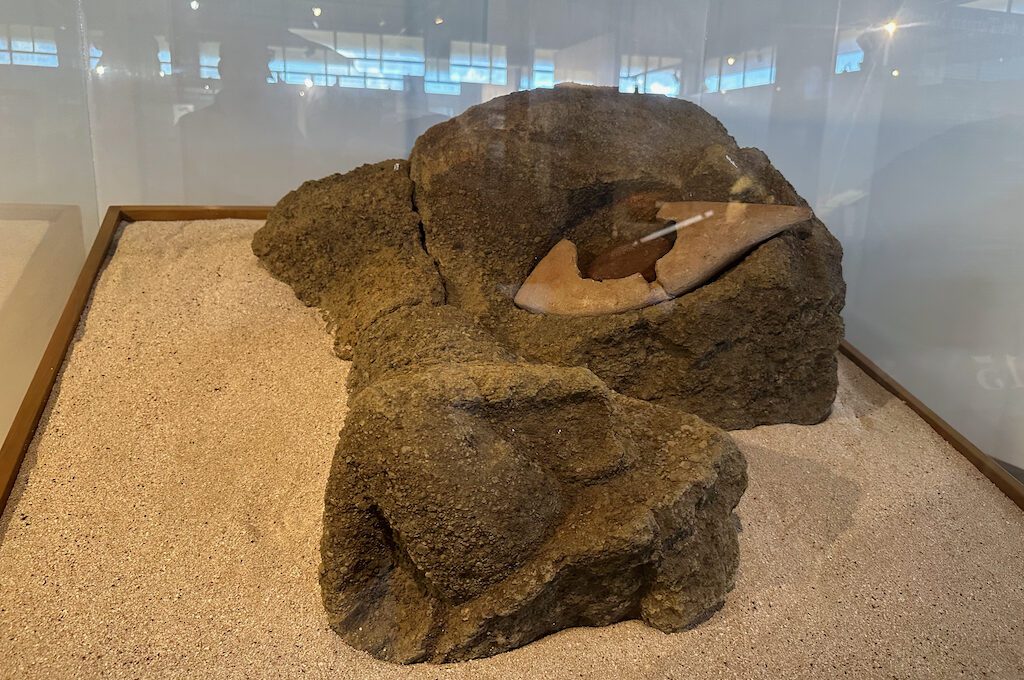
Most if not all statues were toppled over
Initially, the moai statues represented ancestors who had supernatural power to protect their people. But over the years, the people on the island faced tough times including things like starvation and fierce battles over resources and territory.
This ultimately led to them rejecting their stone ancestors and it led to many of the statues being toppled over, with some of them breaking in half in the process. Other natural factors like earthquakes and tsunamis could’ve also caused these to tumble.
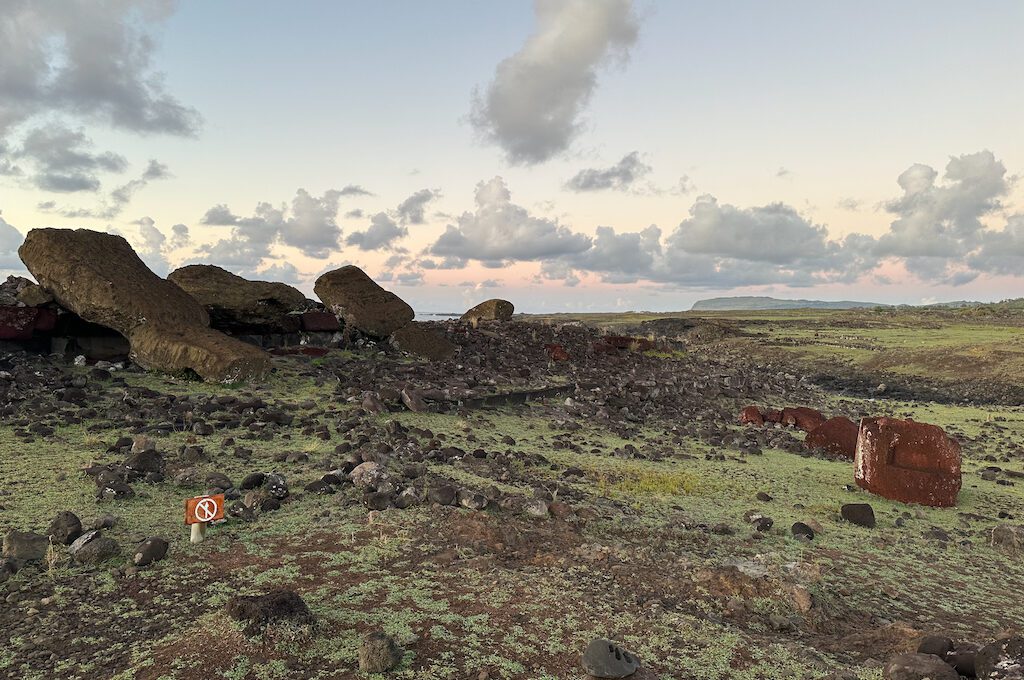
Interesting geography facts
Easter Island has some unique and interesting geography.
With New Zealand and Hawaii, it forms one of the corners of the Polynesian Triangle and also is the most eastern part of Oceania. On top of that, it’s the most western point of Chile.
It’s in such a remote spot on the globe that NASA actually set up an emergency landing strip for their space shuttle back in the 1980s!
About 8,000 locals live on Easter Island
Some people are surprised to find out that people actually live on Easter Island but there is a decent sized community with a population of about 8,000 people.
The vast majority of people live in the one main town on the island called Hanga Roa where there is basically one main road running through town. And as you might guess, it’s one of those close-knit island towns where everyone pretty much knows everyone.
It’s practically treeless
Aside from a few tiny groves of palm trees and patches of eucalyptus trees that have been planted on the island, the terrain is largely devoid of trees.
But this is not always been the case. At one point, the island was likely covered in lush greenery by the now extinct palm tree, Paschalococos disperta.
But due to things like invasive species such as the Polynesian rat, fires, tsunamis, and over harvesting by natives, deforestation occurred.
Now, when you explore the island you’ll be hard-pressed to find any shade.
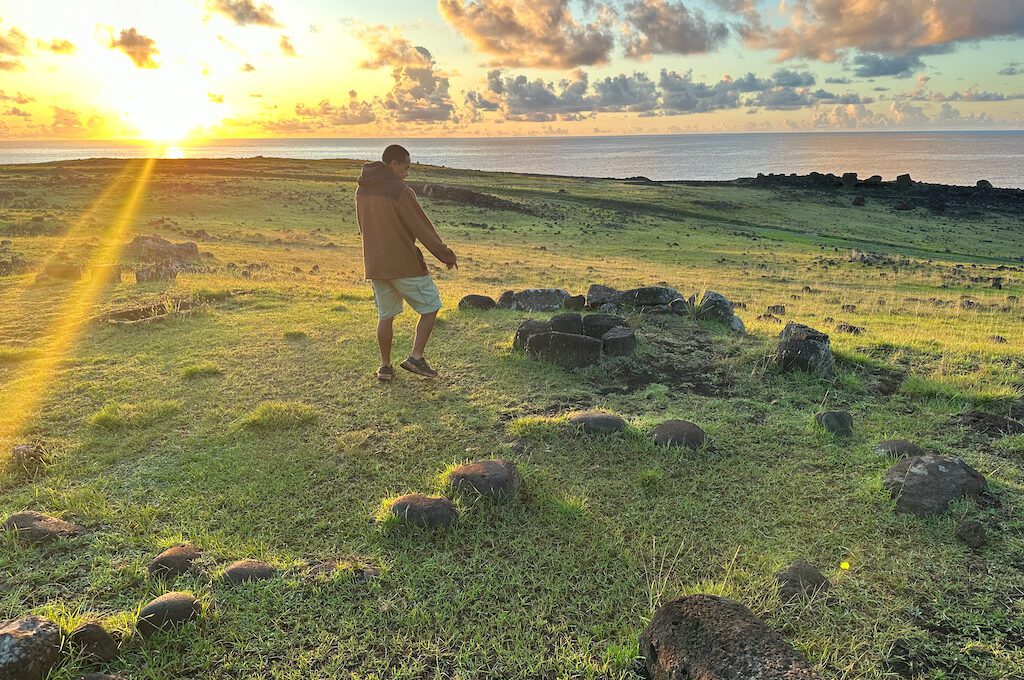
There’s an ancient script no one has been able to decode
There’s a lot of debate on whether or not the scripts of Rongo Rongo — the ancient “language” that has yet to be decoded — was actually a written language.
Regardless of how sophisticated this language actually was, it’s still really cool to see an ancient, undeciphered script. It looks like something straight out of a movie and it’s another artifact you can check out at the museum.
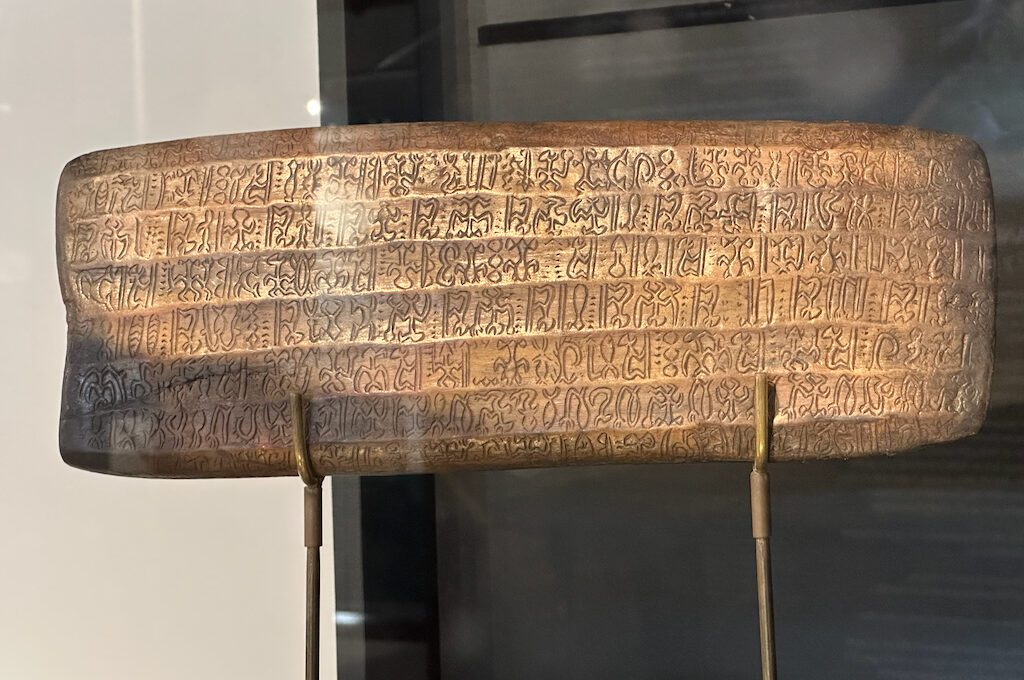
There’s a special species of Easter Island lobster
There’s a special species of lobster (Panulirus pascuensi) that inhabits the waters surrounding Easter Island.
Known as the “Easter Island spiny lobster,” it can grow up to 10 inches long and comes in a dark greenish purple color. It’s also delicious and you can try it out at restaurants like Neptunes.
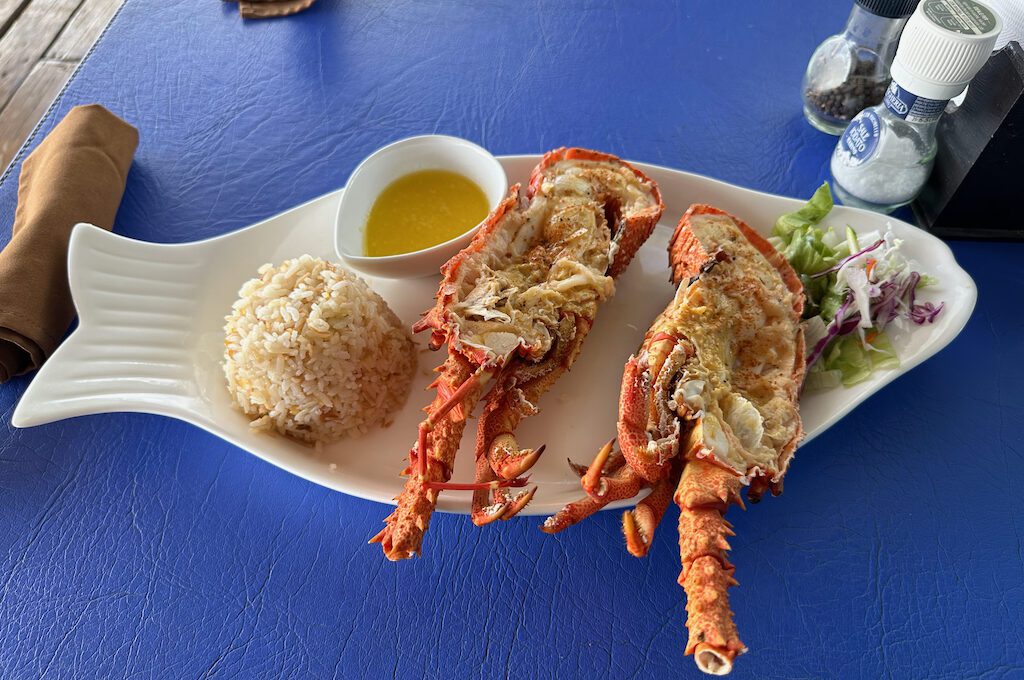
The island is full of caves
The entire island is volcanic in origin and consists of three extinct coalesced volcanoes. So it’s no surprise that you’ll find an extensive network of lava tubes running underneath the island.
Locals told me these likely number well into the hundreds and natives used a lot of them as places of refuge in times of heightened conflict.
These are some of the coolest caves to explore, especially Ana Kakenga which has natural windows that opens up to the ocean.
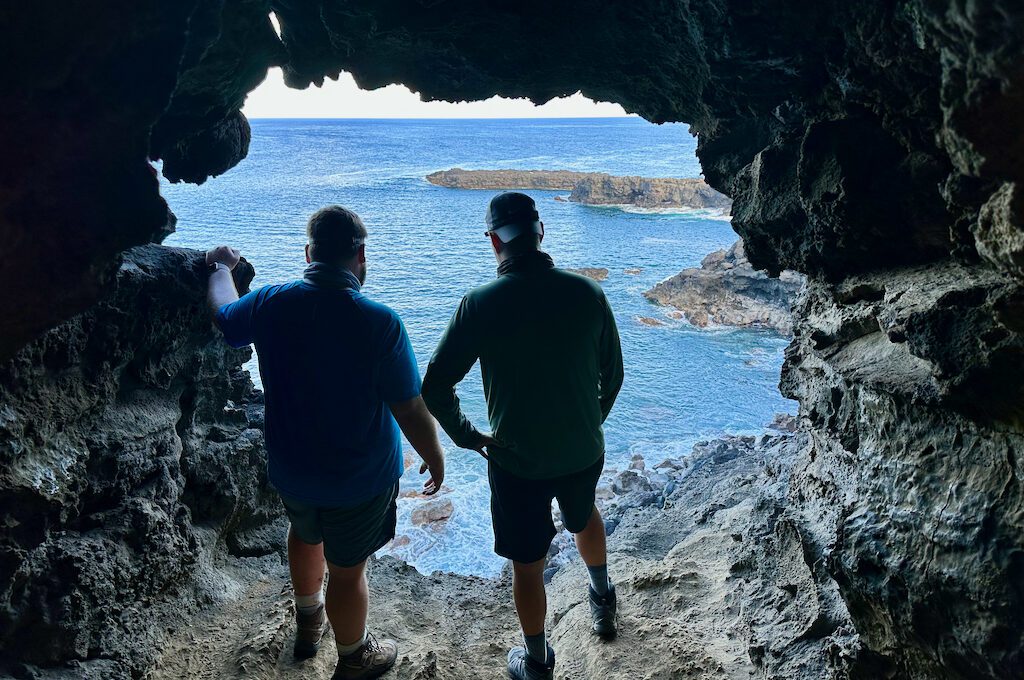
Many ahus were astronomically aligned
Many of the moai are placed on top of platforms called ahus. From these platforms, the statues could overlook and protect their local tribes.
Many of these platforms were astronomically aligned like Ahu Tongariki, the largest ahu on the island. It’s oriented to the sunrise on the summer solstice, while others align with the spring and fall equinox. Many other smaller structures were likely aligned with stars as well.
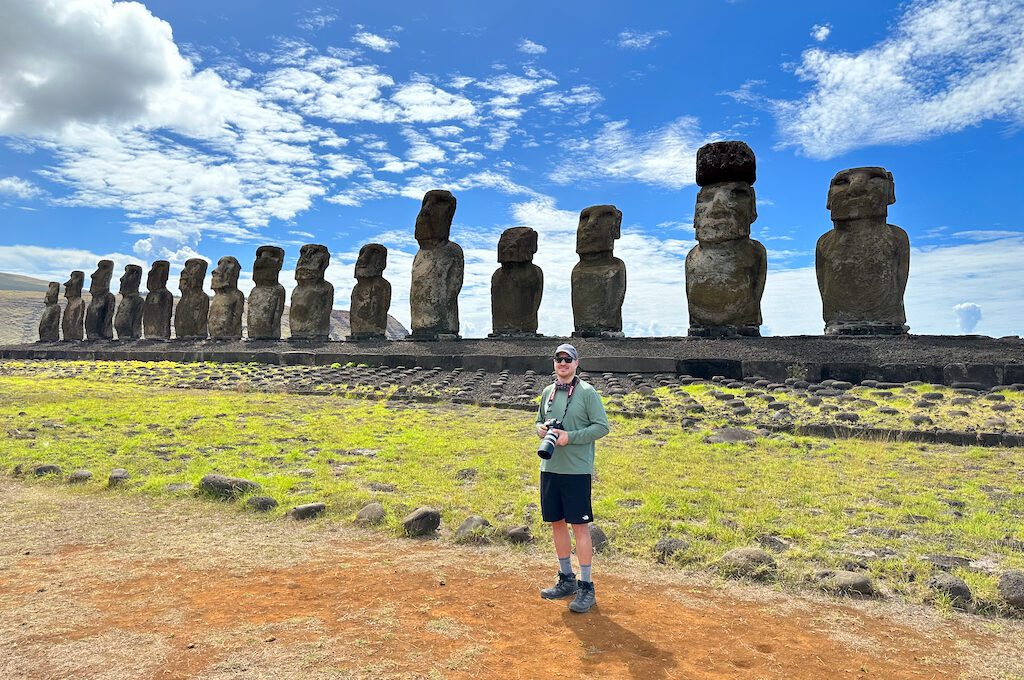
They have some of the darkest skies
You’ll find some of the darkest skies on the planet at Easter Island. They have Bortle 1 skies which are basically as dark as you can get.
This makes the island an ideal spot to stargaze and take astrophotography shots.
For people who live in the northern hemisphere, this is a golden opportunity to see stars and deep sky objects in the southern sky that you can’t normally see. Look up for objects like the Carina nebula, Magellanic Clouds, and the Southern Cross. They will dazzle you!
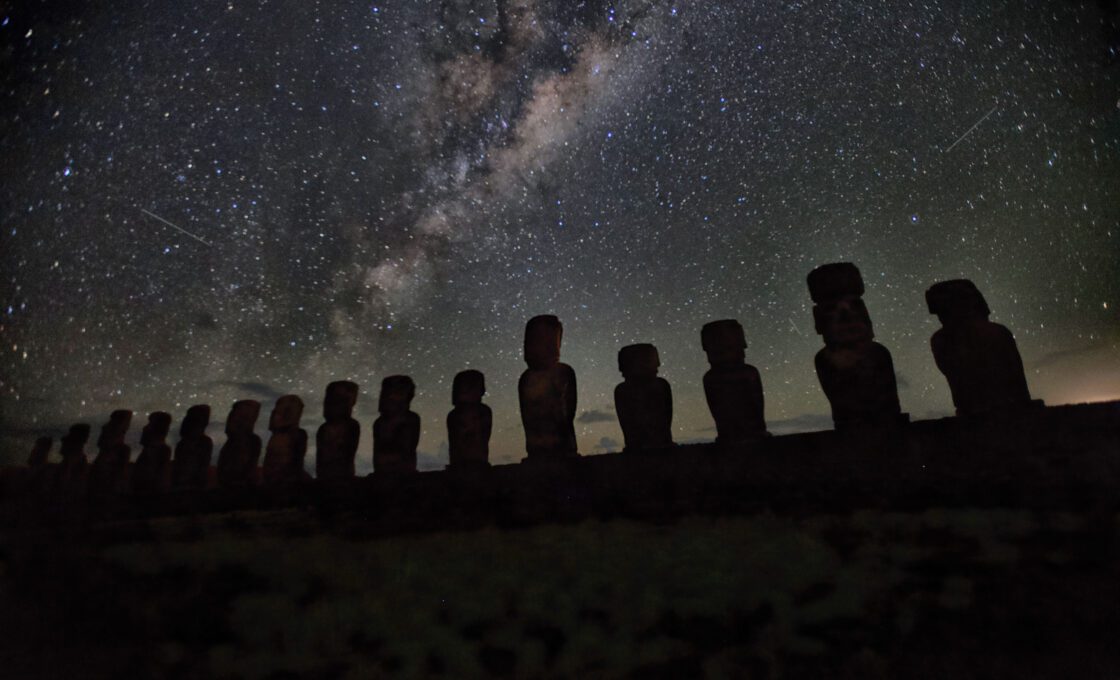
The 8th wonder of the world
Back in 2007, New 7 Wonders announced the new seven wonders of the world after considering over 100 million votes.
Unfortunately, Easter Island did not make the cut but it’s reported that they came in 8th place, making them a pretty official eighth wonder of the world.
Lots of locations semi-seriously claim to be the “eighth wonder of the world” but Easter Island may be the one spot on the globe that has a pretty valid (factually supported) claim to that title.
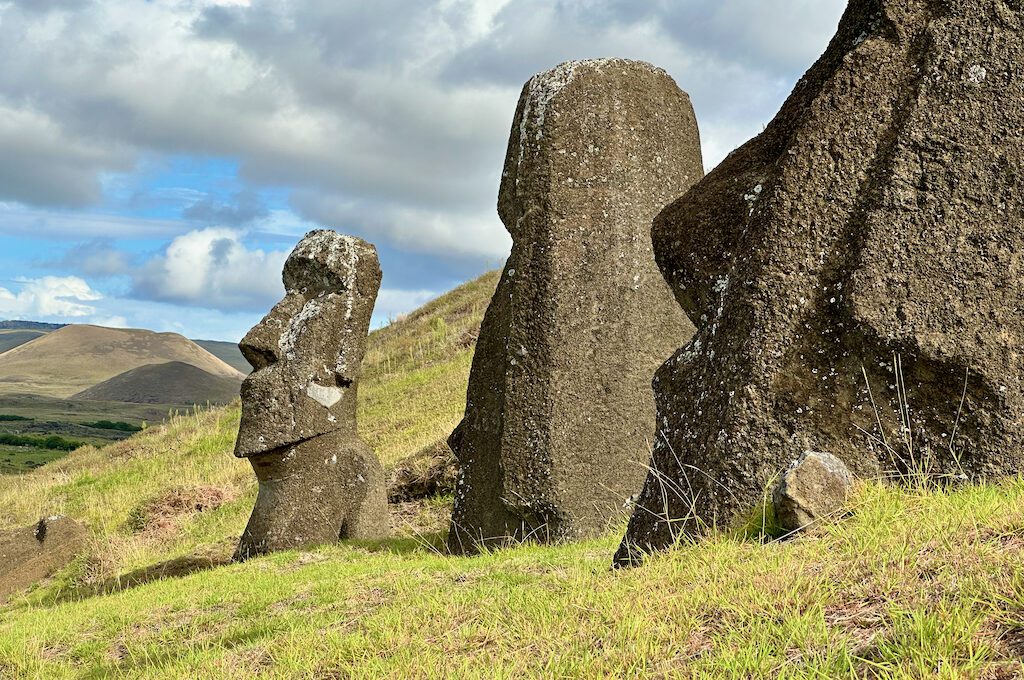
Astronomers named a dwarf planet after an Easter Island deity
There are currently five recognized dwarf planets in the solar system:
- Pluto
- Eris
- Ceres
- Makemake
- Haumea
Makemake received its name from the creator god in the Rapa Nui mythology, which is just another example of this tiny island having an outsized impact on global culture. Pretty cool.
The farthest stretch of human exploration could be here
If you follow the progression of human migration out of Africa, through Asia, and across the Pacific, Polynesia is usually considered the last region that humans explored and settled.
While some places like New Zealand may have been the final spot that Polynesians arrived at, Easter Island could be considered the endpoint of human exploration in terms of arriving at such a far and remote spot on the globe.
The legend of the ancient Polynesian arrival says that the original explorers arrived at Anakena Beach, which would make a lot of sense because it’s one of the only beaches on the island and it would definitely be the easiest place to land at.
This means that you can now step on the sands that represent one of the farthest stretches of human exploration, which is a pretty mind blowing thing to think about.
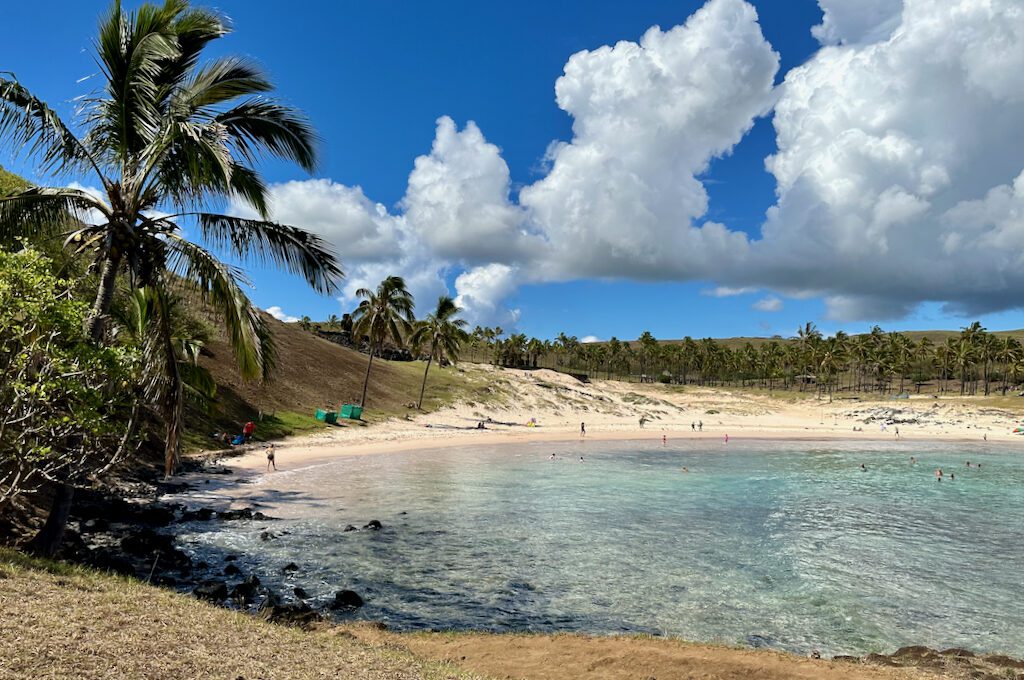
Final word
Easter Island is a fascinating place, which you can probably tell by some of the facts above.
Here are some additional articles you may find helpful when preparing for your visit:
- The Best Places to See on Easter Island
- Guide for getting through Santiago de Chile Airport (SCL) to Rapa Nui/Easter Island
- Complete Guide to Exploring Easter Island’s Rapa Nui National Park
- Where to Stay on Easter Island: Options for All Budgets
- How to get to Easter Island: Everything You Need to Know
- 21 Things You Need to Know About Easter Island Before Visiting
Daniel Gillaspia is the Founder of UponArriving.com and the credit card app, WalletFlo. He is a former attorney turned travel expert covering destinations along with TSA, airline, and hotel policies. Since 2014, his content has been featured in publications such as National Geographic, Smithsonian Magazine, and CNBC. Read my bio.

